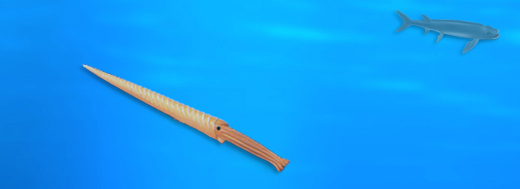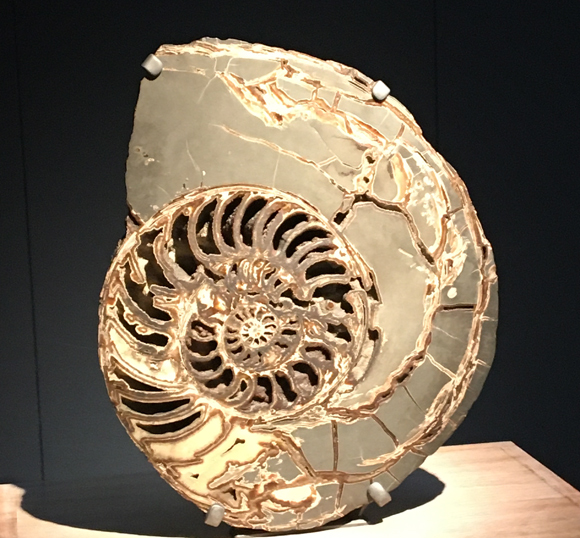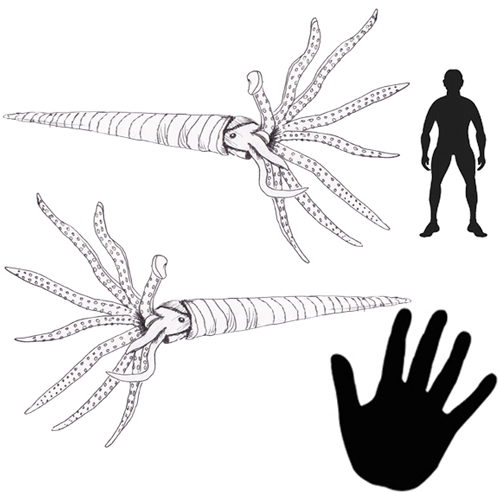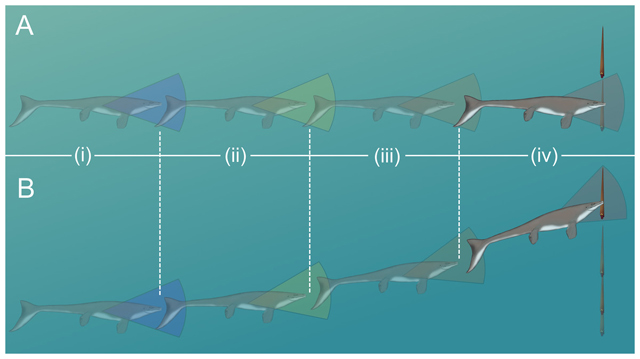Palaeontologists can examine the behaviours of animals alive today to gain an insight into the potential behaviours of closely related extinct animals. However, for many types of prehistoric animal, there really isn’t a living analogy and it is challenging to determine how some types of extinct creatures moved around and kept themselves safe from predators.
Ammonites
For example, earlier this month a scientific paper was published in PeerJ that looked at how straight-shelled ammonites might have escaped predation. The ammonite that was studied is known as Baculites and it was geographically widespread during the Late Cretaceous. The fossil record shows that many different types of straight-shelled cephalopods evolved repeatedly through time, but how these molluscs moved and how they avoided being eaten has puzzled scientists and the lack of a modern-day analogue made research more challenging.

Three-dimensional Models and a Water Tank
Three-dimensional models of the heteromorphic ammonite Baculites compressus were created and placed in a water tank in order to test how these molluscs moved. The regularly coiled ammonite is well-known to fossil collectors and the general public, however these types of ammonite underwent a steady decline in diversity through the Cretaceous. The heteromorphs, those ammonites that did not have regularly coiled shells, continually produced new and often bizarre species indicating a certain level of success at occupying new ecological niches.

Picture credit: Everything Dinosaur
Vertical Propulsion
Ammonites played an important role in Mesozoic marine food chains, filling a variety of ecological niches. Throughout the long evolutionary history of the cephalopods, orthoconic conchs (straight shells) have evolved in a wide variety of families not just the Ammonoidea. For example, prior to the evolution of the ammonites, during the Ordovician nautiloid cephalopods were extremely numerous and some genera were giants, such as Cameroceras.

Picture credit: Everything Dinosaur
CollectA includes a number of ammonite and nautiloid replicas as well as an orthocone (Orthoceras) in its prehistoric life model range: CollectA Prehistoric Life Models.
The models tested in the water tanks revealed that orthocones required very little energy to be exerted for rapid movements and increase in velocity. These molluscs could dart vertically in the water column at a very low metabolic cost.
This suggests that avoid predation these types of cephalopod were able to make sudden vertical movements under rapid acceleration that would have permitted them to avoid the lunge of a marine predator such as a mosasaur.

In the tests, the models were able to move more than two body lengths upwards in less than a second. Whilst these cephalopods likely assumed low energy lifestyles day-to-day, they may have had a fighting chance to escape from larger, faster predators by performing quick, upward dodges.
The researchers concluded that these experiments suggest that orthocones sacrificed horizontal mobility and manoeuvrability in exchange for highly streamlined, vertically-stable, upwardly-mobile shells.
The scientific paper: “Vertical escape tactics and movement potential of orthoconic cephalopods” by David J. Peterman and Kathleen A. Ritterbush and published in PeerJ.
The Everything Dinosaur website: Dinosaur and Prehistoric Animal Toys.






Leave A Comment